Celebrating Pennsylvania’s Birth
March 1st through the 8th marks the week-long celebration of Pennsylvania’s birth. In 1681, King Charles II of England granted William Penn a charter to establish a colony in the New World. Let’s take a closer look at the man behind this colony.
William Penn was born on October 14, 1644, the son of royalist Sir William Penn, a famous Admiral in the British Navy. Penn grew up during the unstable times of Oliver Cromwell’s reign and the Glorious Revolution. At 15, he met Thomas Loe, a Quaker missionary, and embraced Quaker beliefs of pacifism and equality. Penn converted to Quakerism at 22, much to his father’s disapproval.
To repay a debt of ₤16,000 to Penn’s father, King Charles II granted young Penn 45,000 square miles of land on March 4, 1681. This land, located between the 39th and 42nd degrees north latitude, stretched westward from the Delaware River.
Penn initially referred to his land as “New Wales” and then “Sylvania.” King Charles added “Penn” to honor Admiral Penn, thus creating Pennsylvania. William Penn, at 37, gained sovereign rule over this new territory.
Building a Unique Colony
Penn quickly set out to establish a colony unlike any other. He recruited Englishmen from various trades to join him. In 1682, Penn, guided by his Quaker ideals, sailed to Pennsylvania on the ship Welcome.
He founded Philadelphia at the mouth of the Delaware River to promote commerce and government. To ensure peace, Penn purchased land from local Native Americans and assured Dutch settlers of acceptance and religious freedom.
Boundary Disputes and Governance
A boundary dispute between Maryland and Pennsylvania arose when Lord Baltimore of Maryland claimed that Philadelphia should belong to Maryland. The dispute persisted until Penn’s sons and Charles Calvert compromised in 1732, and the issue was finally resolved with the surveying of the Mason-Dixon line in 1763.
Penn established laws and a government embodying Quaker ideals. An Assembly ensured power did not fall into the hands of one person. The government protected citizens’ property and business ventures, imposed fair taxes, and prioritized corrective measures in prisons. The Charter of Privileges, written by Penn in 1701, lasted until the American Revolution.
Penn’s Legacy
Penn spent little time in Pennsylvania due to official duties in England. On his last visit in 1699, after 15 years, he was welcomed by large crowds. Philadelphia had grown into a tolerant and bustling city of 3,000. His dream of a successful colony had been realized.
William Penn died in 1718 at age 73 and is buried in a Quaker cemetery in Buckinghamshire, England. Despite residing in Pennsylvania for fewer than four years, his legacy as the founder of Penn’s Woods endures.


